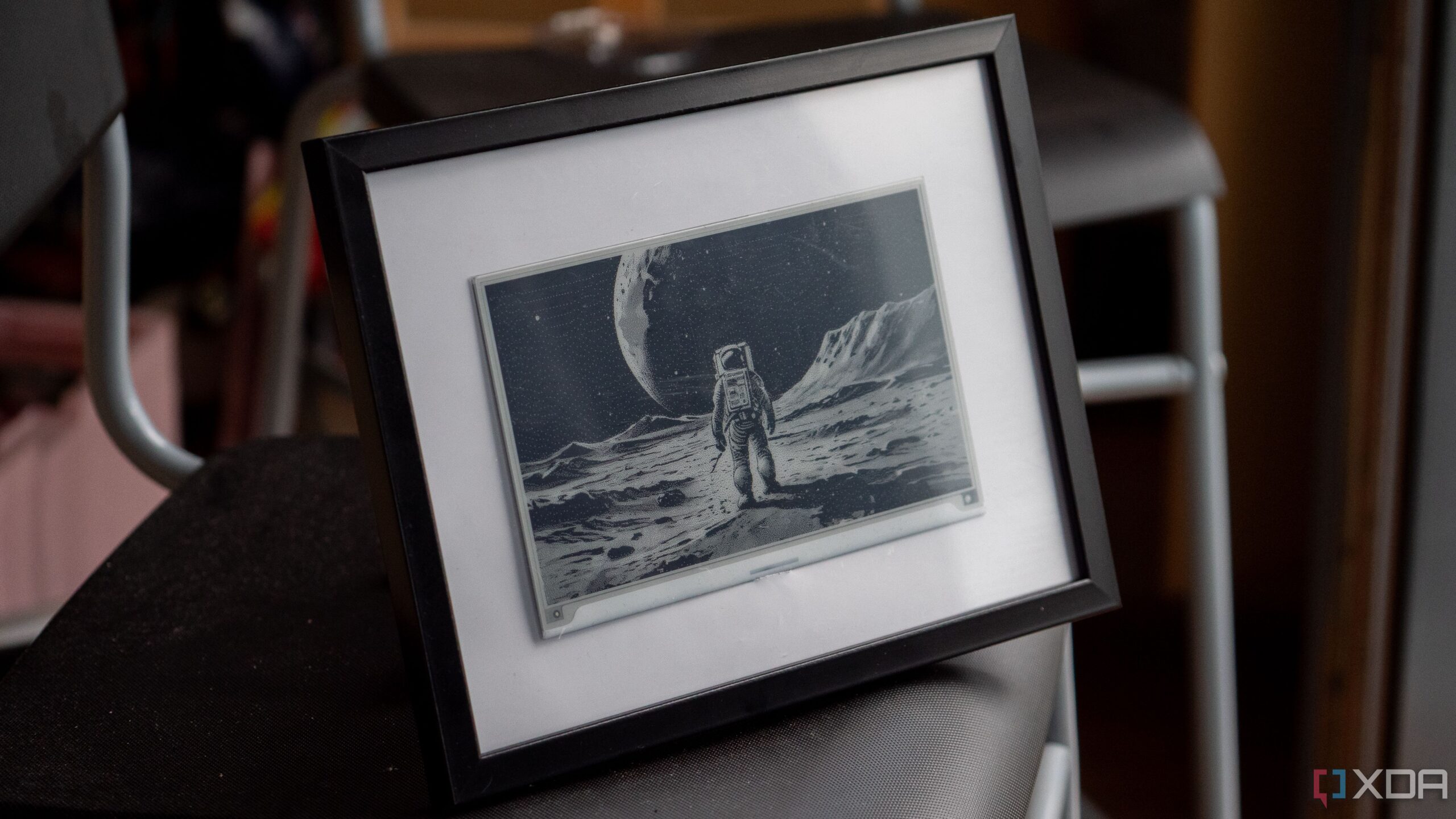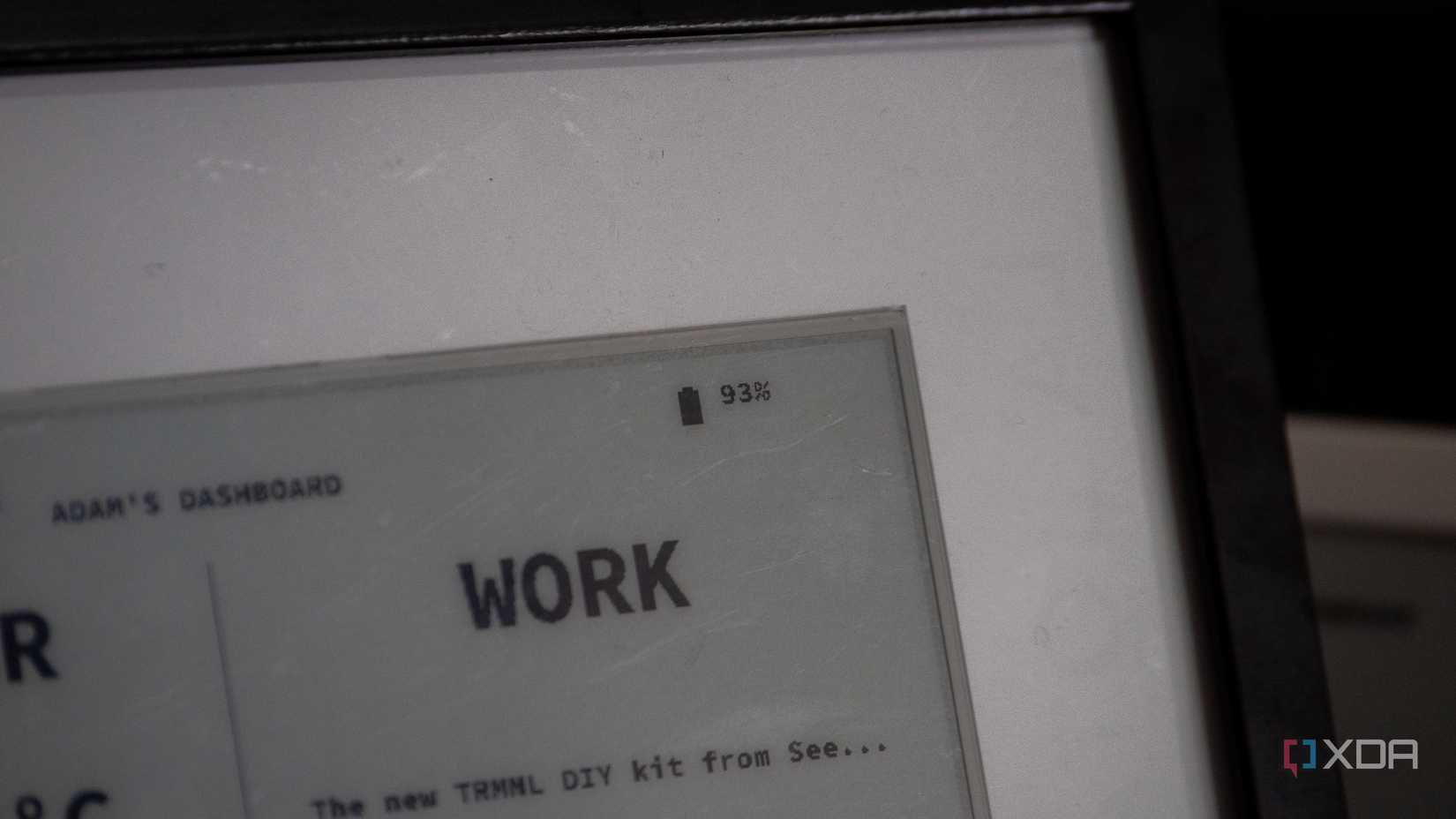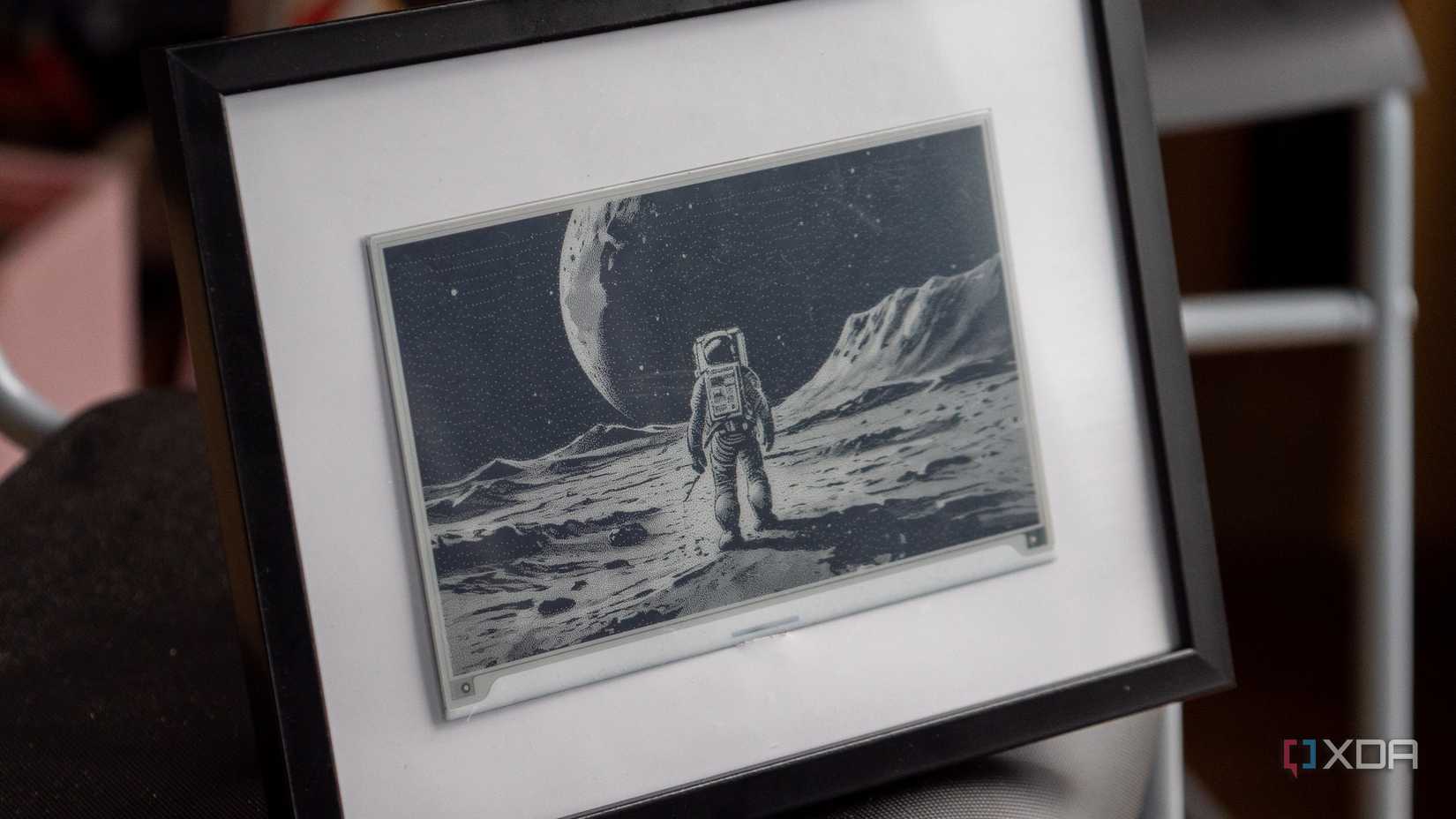Following on from the release of the XIAO 7.5-inch ePaper Panel from Seeed Studio, the company has now released the TRMNL 7.5-inch DIY kit, a way to build your own TRMNL device to put in a shell of your choosing. However, despite being aimed specifically at TRMNL (which requires either hosting your own TRMNL server or paying for a bring your own device license), you can do a lot more than just TRMNL with it, too.
The DIY kit has a few advantages, most notably the fact that it’s cheaper than the regular ePaper Panel from Seeed while packing an ESP32-S3 Plus instead of the ESP32-C3, and it can read the battery level, too. The only downside is the lack of a case, but the entire point of this kit is that you build your own. And, as you can see, you don’t even need a 3D printer to do that. I stuck mine in a photo frame, and it works perfectly.
About this article: Seeed Studio sent us the TRMNL DIY kit for the purposes of this article. The company had no input into its contents.
What’s good about the TRMNL DIY kit?
Perfect for someone who wants to make their own devices
The TRMNL DIY kit has a lot to love, with very few downsides. Its MSRP is $45 compared to the $60 of the regular XIAO ePaper Panel, and all you lose is the case. You get a better ESP32 to drive the entire thing with significantly more flash and PSRAM, and you can read the battery level from software rather than relying on guesswork.
If you intend to actually use this display with TRMNL, then that $15 saving will have to immediately be spent on a bring-your-own-device license for TRMNL, which costs $50. Plus, you’ll need some kind of housing, either made with a 3D printer or an existing casing from something. As a result, the $15 savings do get wiped out, but it’s still pretty affordable, especially when compared to the $139 fully-built TRMNL.
In the box, you get an ESP32-S3 Plus soldered onto a display developer board, a 2,000 mAh 3.7 volt battery to power the entire thing, and a 10cm FPC extension cable. There’s also a freely available enclosure board that you can 3D print to save you needing to design your own, so if you have a 3D printer, you can print it and immediately build it by following the official documentation.
Finally, you have complete freedom to do what you want with it, and you don’t have to use it for TRMNL. I did just to test how easy it was to get working, but you can flash your own software using Arduino or ESPHome, saving yourself $15 in the process for a better ESP32 and then saving even more money by not paying for a TRMNL license. It’s a better, more refined piece of hardware than the XIAO ePaper Panel, and the only difference is that you’ll need to have a plan to encase it in something.
Setting up the TRMNL DIY kit for the first time
With TRMNL or ESPHome
Setting up this kit differs depending on what you want to use it for. For setting it up with TRMNL, you just need to use the web-based flasher after connecting it to your computer. You shouldn’t need to install any drivers, and it will just work in a Chromium-based browser.
After you’ve flashed it, it works the same as any other TRMNL device. You connect to it using your phone, provide it with your Wi-Fi details, and note the MAC address that will be shown on your phone. Once you add that MAC address to your TRMNL account (assuming you have a BYOD license), then it will start showing the playlists that you’ve defined.
Now, while this product is intended primarily for people who want to build their own TRMNL devices, ESPHome and Arduino are just as supported, too. For ESPHome, it’s the same process that we’ve covered with the XIAO ePaper Panel, except that Seeed Studio explicitly states that you can use the waveshare_epaper model of 7.50inv2p, which denotes partial refresh support. While the documentation didn’t state it for the XIAO ePaper Panel, it still worked, whereas the example code given for the TRMNL DIY kit actually uses that model.
I was able to port my code from the XIAO device to this with minimal effort, merely changing the pins used to initiate the display. Even better, because the driver board has buttons on it, you can add buttons to control anything you want, such as a way to change the screen shown on the display. You can do this in two ways: either by use of a script defined in ESPHome that reacts to the button presses, or by setting a variable on a button press that, in your display lambda, is guarded by an “if-else” block to change content on the display based on the variable that’s currently set.
If you want to use these buttons, here’s some code to get you started with button one, taken from the documentation. Button one is on GPIO2, button two is on GPIO3, and button three is on GPIO5.
binary_sensor:
- platform: gpio # Next page KEY1
pin:
number: GPIO2
mode: INPUT_PULLUP
inverted: true
id: key1
name: "Key1"
on_press:
then:
- lambda: |-
You can read the battery voltage by monitoring from GPIO1 using the ADC platform with an attenuation of 12db and a filter multiplying by two, and you can then correspond battery levels to specific icons using designated glyphs. This is something the XIAO ePaper Panel can’t do, while still being more affordable and giving you the flexibility to house it exactly how you’d like.
You don’t need a 3D printer
Just be a bit creative
I often see many people state that they can’t purchase these devices because they don’t have a 3D printer and, therefore, have no way to house their creations. Yet, with a bit of creativity, that doesn’t have to be a limitation. I used a picture frame, which can be bought for just a few dollars, but I’ve also seen people use old lunchboxes, plastic boxes, and even old housing from unused tech to house their creations.
In that sense, this can be the perfect investment for someone who wants to get started with ePaper but doesn’t like the fact that they will need to build their own housing. In that instance, you might be more likely to go for the all-encompassing XIAO ePaper Panel, but honestly, this is simply a better deal. It’s a better chip, it’s cheaper, and you can read the battery level natively. Those are big upgrades, and a $15 saving with a $10 picture frame gives it more character, gives you more control, and a better experience overall.
That’s not to knock on the XIAO ePaper Panel, either. I personally purchased two of those, but if I were to make a purchase now, this would be the one I’d buy instead. They’re both great, but this is a souped-up, more refined experience. It’s more aimed at tinkerers than anything else, but with code samples and community development, it can be easy to get started and truly make it your own.


